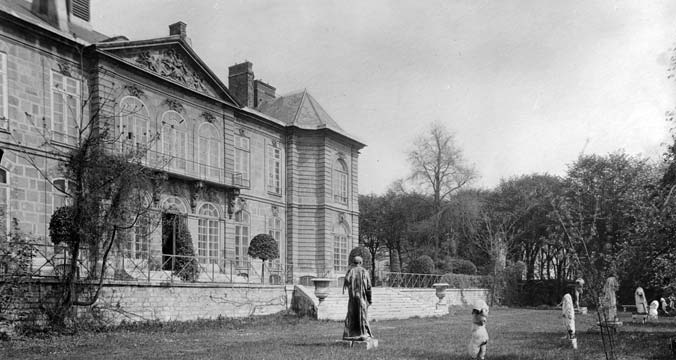 Auguste Rodin photographed on the steps of the Hôtel Biron, Paris
Auguste Rodin photographed on the steps of the Hôtel Biron, Paris
First opened to the public on 4 August 1919, the Musée Rodin was housed in a mansion, formerly called the Hôtel Peyrenc de Moras. Now known as the Hôtel Biron, it was built in the Rue de Varenne, Paris, between 1727 and 1732.
 Elevation of the façade of Mrs. De Moras’s mansion on the garden side
Elevation of the façade of Mrs. De Moras’s mansion on the garden side
 L’Hôtel Biron, côté jardin, Charles Berthelomier, circa 1910
L’Hôtel Biron, côté jardin, Charles Berthelomier, circa 1910
The estate was put up for sale and while awaiting a buyer, tenants were allowed to occupy the Hôtel Biron from 1905. Among them were several artists, Jean Cocteau (1889-1963), Henri Matisse, the dancer Isadora Duncan and the sculptress Clara Westhoff (1878-1954), future wife of the poet Rainer Maria Rilke (1875-1921), who first told Auguste Rodin about the estate. In 1908, the sculptor thus rented four south-facing, ground-floor rooms opening onto the terrace, to use as his studios. The garden that had run wild probably made a strong impression on Rodin, encouraging him to place some of his works and part of his collection of antiques amidst its greenery. From 1911 onwards, he occupied the entire building.
Listed as a historical monument in 1926, the Hôtel Biron and its grounds have since undergone major renovation and restoration schemes, to better assert their role as a museum.






